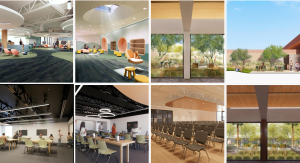Today’s libraries serve to meet the needs of all members of their communities, a mission that extends far beyond simply housing books or maintaining databases. The Palm Springs Public Library, for example, partners with Baby2Baby to provide free diapers, wipes, detergent, food, and toiletries to families in need throughout the Coachella Valley. Meanwhile, the nearby Rancho Mirage Library offers telescopes for checkout, encouraging patrons to explore the night skies over nearby Joshua Tree National Park, and the Cathedral City Library hosts literacy classes that empower adults to pursue education and opportunity.
At first glance, these programs may not seem like “library work,” but they embody the evolving philosophy of what a library is and can be. The Palm Springs Public Library’s current renovation of creating a new library to inspire creativity, collaboration, and innovation reflects this shift. Interestingly, this transformation is not about adding more square footage, but about reimagining space: scaling back physical collections to make room for connection, creation, and learning in new forms.

This evolution aligns with the concept of Library 2.0, which Michael Casey and Laura Savastinuk (2007) describe as a model that “encourages constant and purposeful change” and invites user input in the creation of services they actually want. The heart of Library 2.0 lies in responsiveness by listening to community voices, experimenting with new ideas, and building services collaboratively. What we are witnessing in Palm Springs is not the decline of books, but the rise of a participatory culture within the library.
Similarly, the idea of hyperlinked communities, as articulated by Michael Stephens (2016), envisions libraries as nodes in a web of human connection open, participatory, and deeply responsive to the needs of their communities. Hyperlinked libraries use technology and empathy to bridge gaps, foster inclusion, and empower individuals to share knowledge. When a library connects families with diapers, learners with literacy, or stargazers with telescopes, it becomes a living network of support and discovery.
As an emerging information professional, I find this transformation inspiring. It challenges me to think beyond traditional roles and to see libraries as ecosystems of care and creativity, or places where technology, empathy, and community intersect. The libraries of today (and tomorrow) are not simply repositories of information; they are platforms for human potential.
In the spirit of the hyperlinked community, I invite readers to reflect: where do you see these principles in action within your own community? Which programs blur the line between service, learning, and connection? By identifying and sharing these examples, we actively participate in the ongoing dialogue that keeps libraries vibrant and responsive!
References:
Casey, M. E., & Savastinuk, L. C. (2007). Library 2.0: A guide to participatory library service. Information Today.
Stephens, M. (2016). The heart of librarianship. ALA Editions.
@itschelsea, I love your post, especially this gem: “[libraries] are platforms for human potential.”
In response to your call for reflection (I wish I’d thought to do that on my own post, but there’s still a few more for that) on what “blurs the line between service, learning, and connection”: I think our walking club does just that. While patrons walk together from the library through the surrounding area of a mile or so, they learn about their community and some of the people that inhabit it. Book talk is a possibility but never mandatory. I’ll keep an eye out for your next post. @suedonnim
Hi @suedonnim! Thank you for the kind words. Do not fret about wishing you had made a call out like I did. That is what is great about a hyperlinked community: we can take ideas from one another and grow!
I LOVE that your library has a walking club. I would love to be a part of that.
I look forward to seeing your blogs! – Chelsea
🫠
@itschelsea I too love the phrase “platforms for human potential.” You’ve captured exactly what our work should aspire to: creating spaces where technology and learning serve people, not the other way around.
@michael Thank you for the positive feedback!
@itschelsea 👍😄